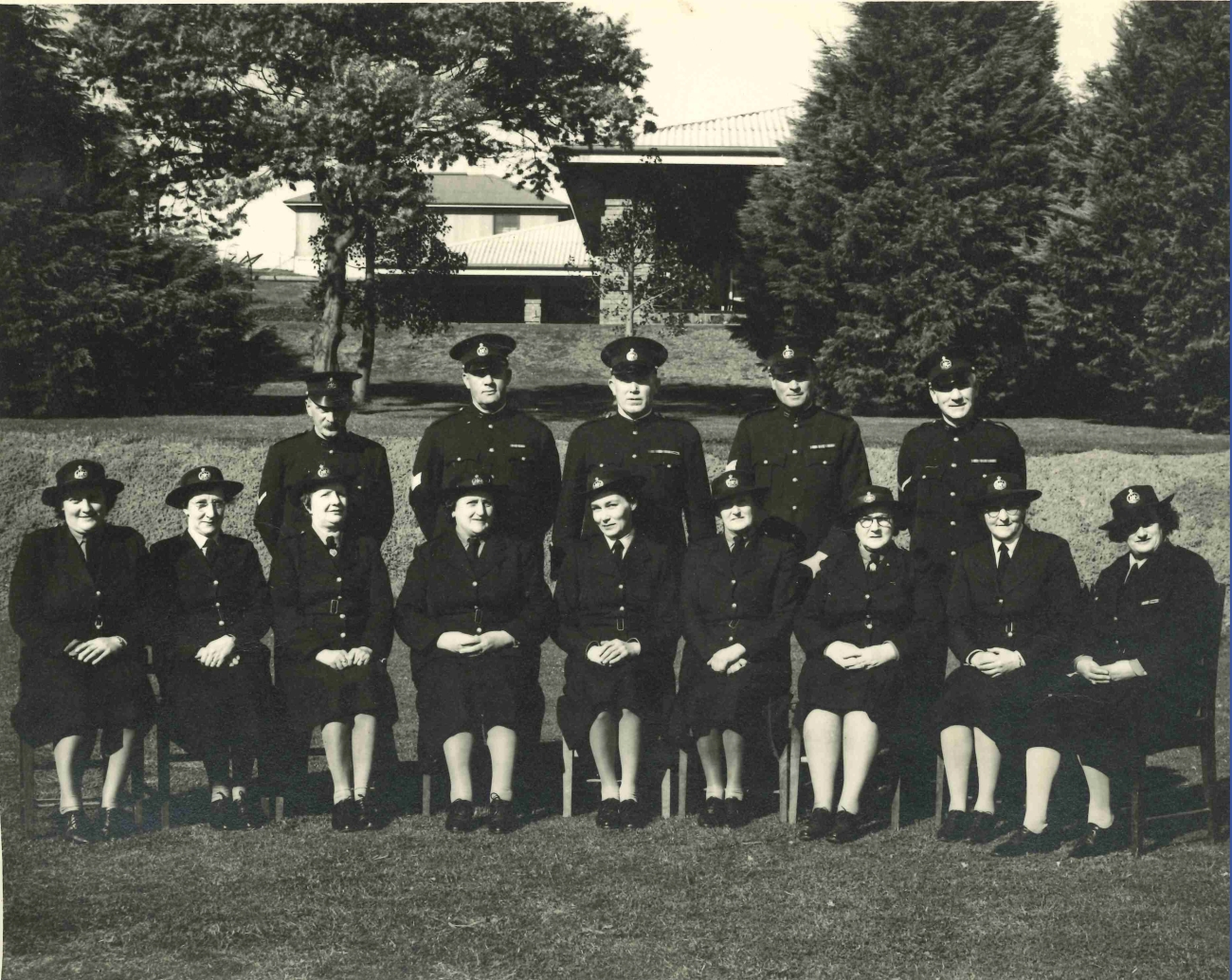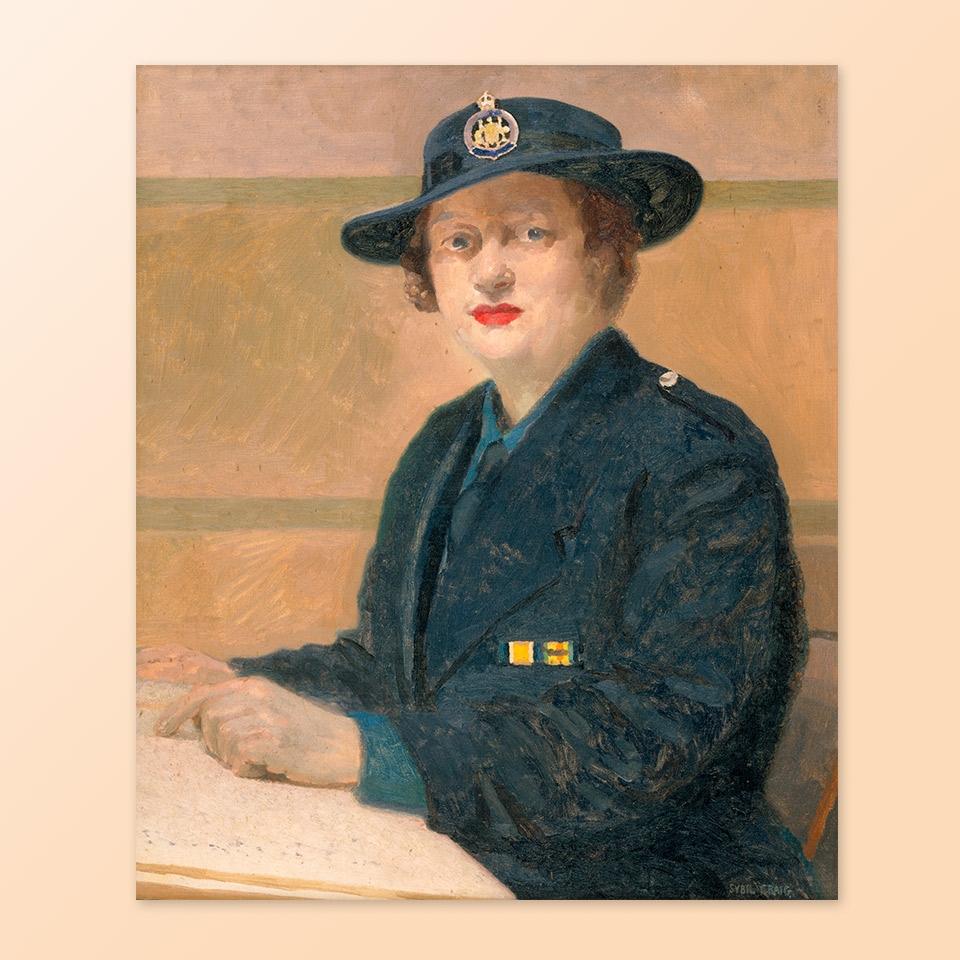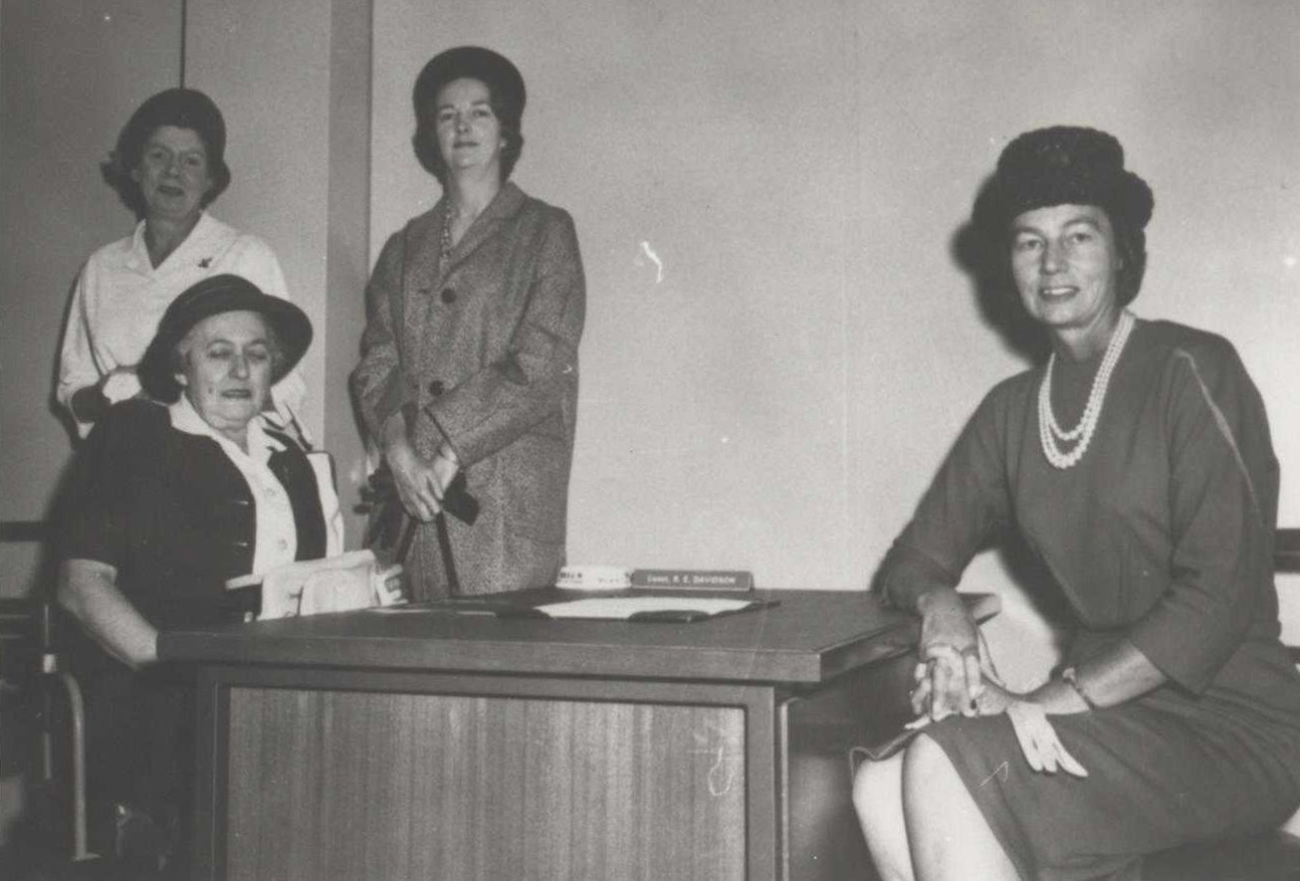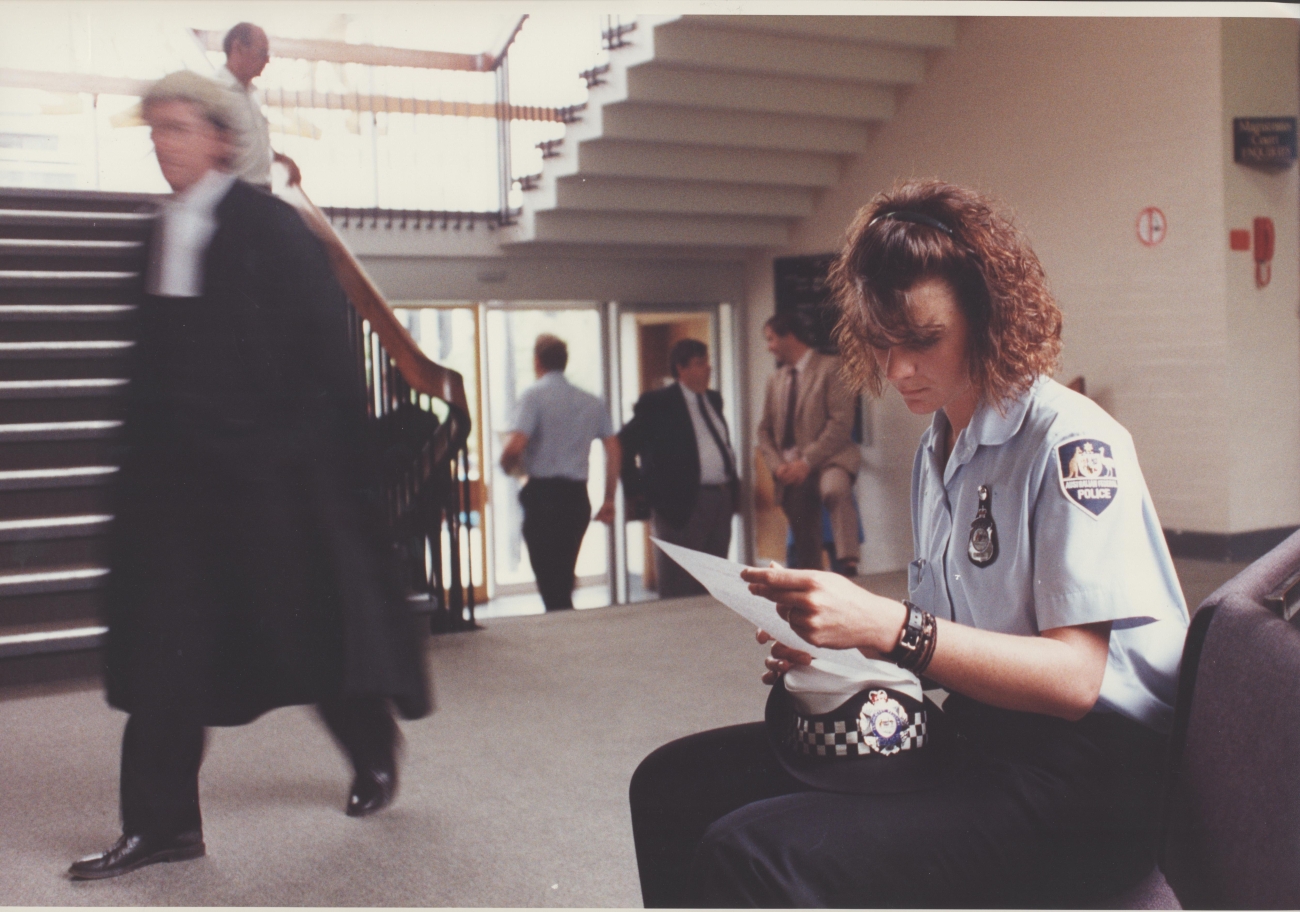For policewomen, who have served the AFP over the past 100 years, the uniform has evolved. It has evolved as much as their roles and responsibilities.
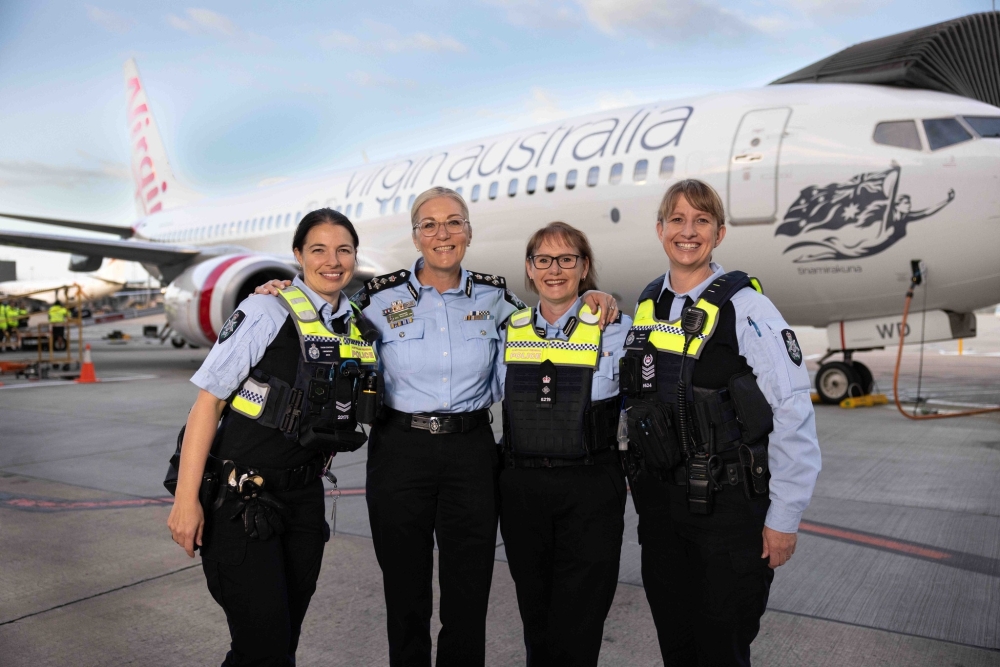
Guarding the peace
The story of how roles, responsibilities and respect for women in policing has grown in Australia is closely linked with the evolution of the policewomen's uniform.
The Defence Establishment Guard (DEG) formed on 26 April 1935 included 33 women. Guards were sworn in to perform functions at defence establishments in Victoria and NSW. Numbers increased during the war years as the guarding function became more vital. The DEG changed its name to the Peace Officer Guard on 6 May 1942.
On 6 August 1942 Attorney General of Australia Dr Herbert Evatt requested the recruitment of more women into the Peace Officer Guard. Their role was to check and supervise access points to Government buildings and munitions factories. There was a shortage of men due to the war efforts. Around 1,000 women were needed to guard Commonwealth buildings and defence establishments.
Australian Army and Royal Australian Air Force women’s auxiliary units helped with the recruitment. Dr Evatt had noticed women checked passes at American government buildings. He employed a similar approach in Australia.
The women recruited needed to be intelligent, and between 25 to 40 years old. They had to be tactful, firm, friendly and accustomed to the supervision of other women. Special qualifications were sought. Women over 40 with an aptitude for training were also considered.
The women in the Peace Officer Guards had the same technical qualifications as police constables who were men; but did not carry weapons. By the end of 1942, the average age for women in the Peace Officer Guard was 40. Most were married. The women’s uniform consisted of blue overalls with a blue felt slouch hat and badge. Uniforms were only issued after a 3-month probation period.
Plain clothes and pearls
ACT Police employed its first policewoman, Constable Alice Clarke on 18 July 1947. Constable Clarke was granted the same policing powers as her male colleagues. There were only 6 policewomen recruited to ACT Policing between 1947 and 1963.
ACT policewomen were not issued uniforms until 1968. For 21 years they wore ‘everyday’ plain clothes. This even included pearls as seen below being worn by Sergeant Gladys Johnson.
Constable Robyn Davidson was the 5th policewoman employed by ACT Police. She was appointed in 1963. Her policing career began as a member of the London Metropolitan Police. Between 1947 and 1979 ACT Police appointed 38 policewomen.
ACT Police launch first women’s uniform in 1968
The first ACT Police policewomen’s uniform was launched on 19 September 1968. The launch coincided with officers undertaking an anti-terrorist training exercise in Canberra. The uniforms were designed for both summer and winter. They included skirts and jackets with ties, short sleeved shirts, caps and black gloves.
The uniform comprised a ‘junior blue’ skirt, jacket and cap made from Australian pure wool, and a blue cotton blouse with a black ‘bow tie’. The skirt was straight with a kick pleat and the long-sleeved jacket had epaulettes on each shoulder. Recruits wore a light khaki uniform dress with ACT Police buttons. They did no wear their ‘blues’ until graduation day.
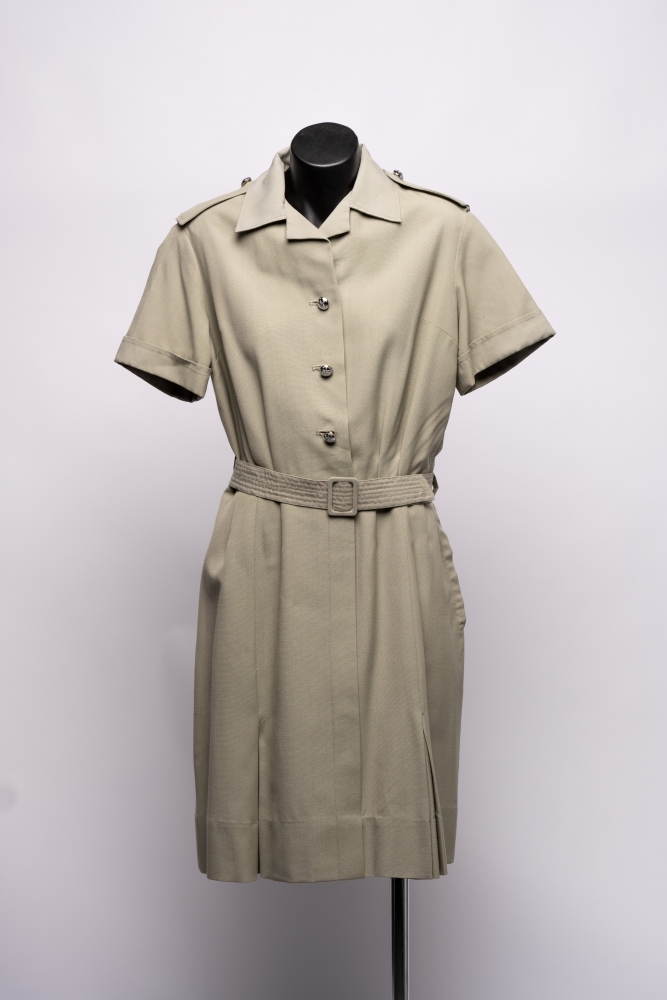
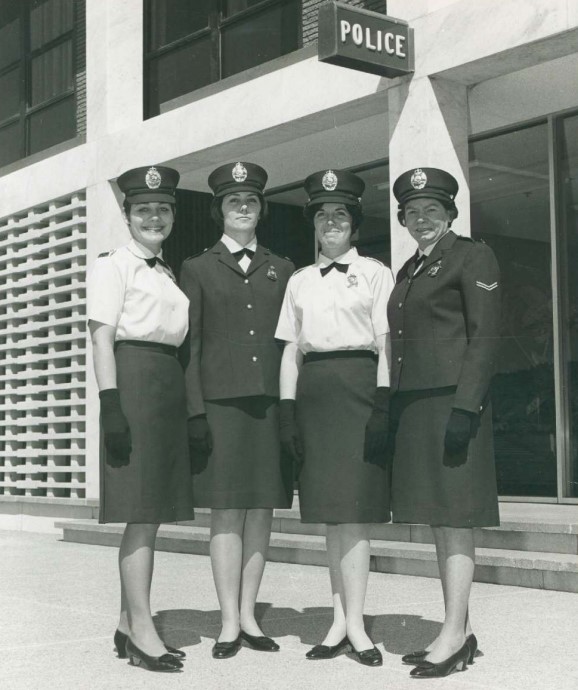
Living in the 70's – hats and handbags
By the mid-1970's women were performing routine security roles Parliament House in Canberra and other Commonwealth facilities. The most notable change in the Commonwealth Policewomen’s uniform was the replacement of the broad brimmed hat with a cap.
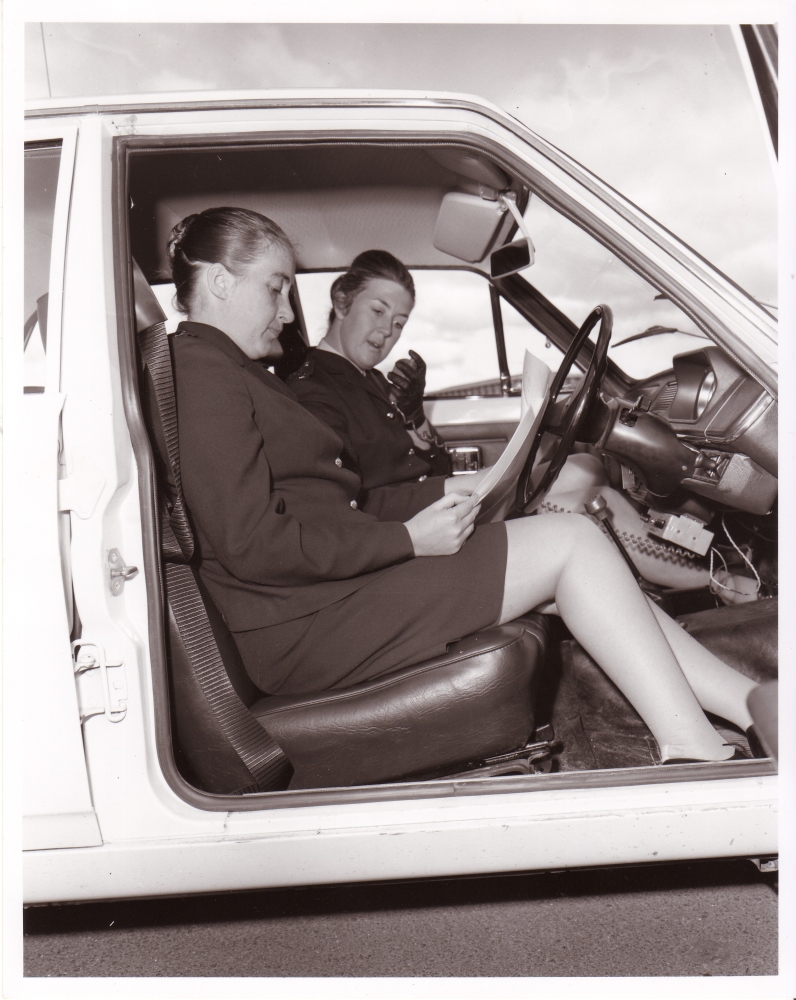
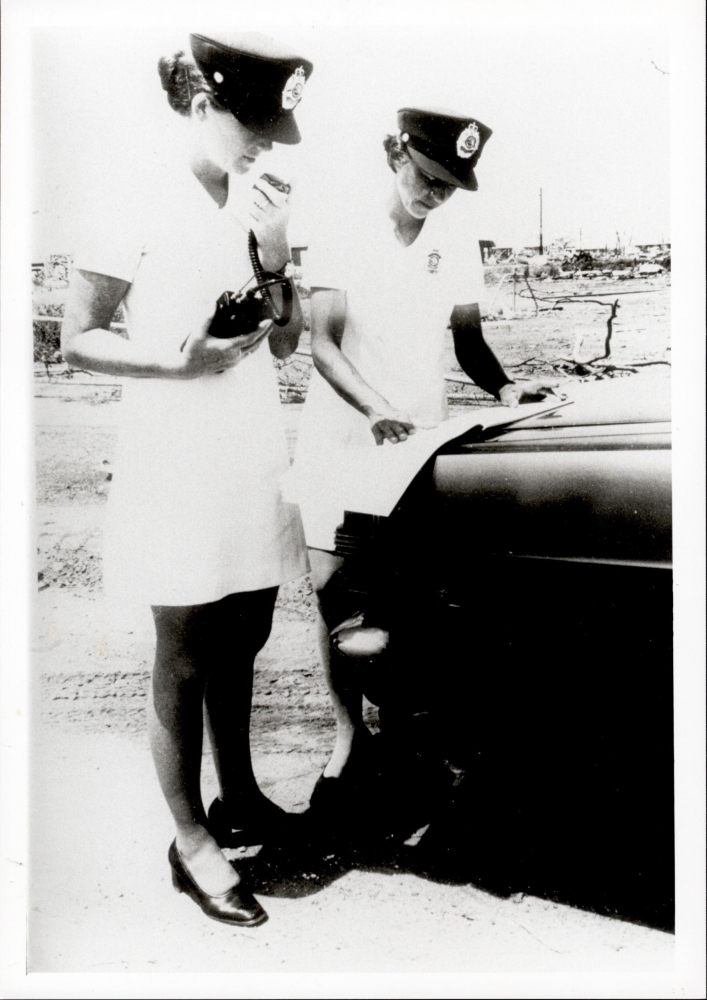
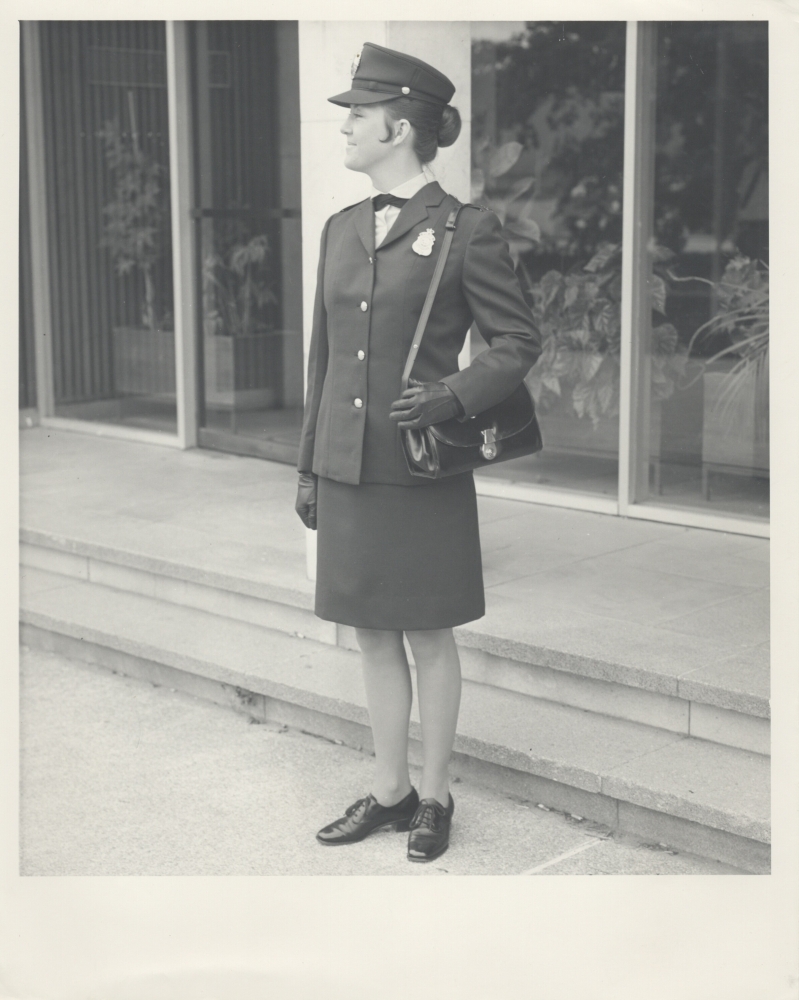
From the height of fashion to highly impractical
Following the establishment of the AFP in 1979 a summer uniform was released for policewomen. The uniform was a light-blue, two-piece ‘ensemble’. It was from a pattern introduced by ACT Policing. The uniform was disliked from the start due to its impractically. It had no provision for an accoutrements belt.
Policewomen had to carry a handbag to store their pistol, handcuffs, a baton and credentials. It was often said by many policewomen who carried this load that “in an emergency it would be easier to subdue an offender by clubbing them with the handbag, rather than ‘fussing’ about extracting the individual items”.
It was also said at the time, that “while the light blue short-sleeved jacket and matching straight skirt with a ‘kick pleat’ looked smart – as long the wearer was standing still and upright – it was highly impractical”. After many complaints, a committee was set up to review the uniform. It was phased out from 1986.
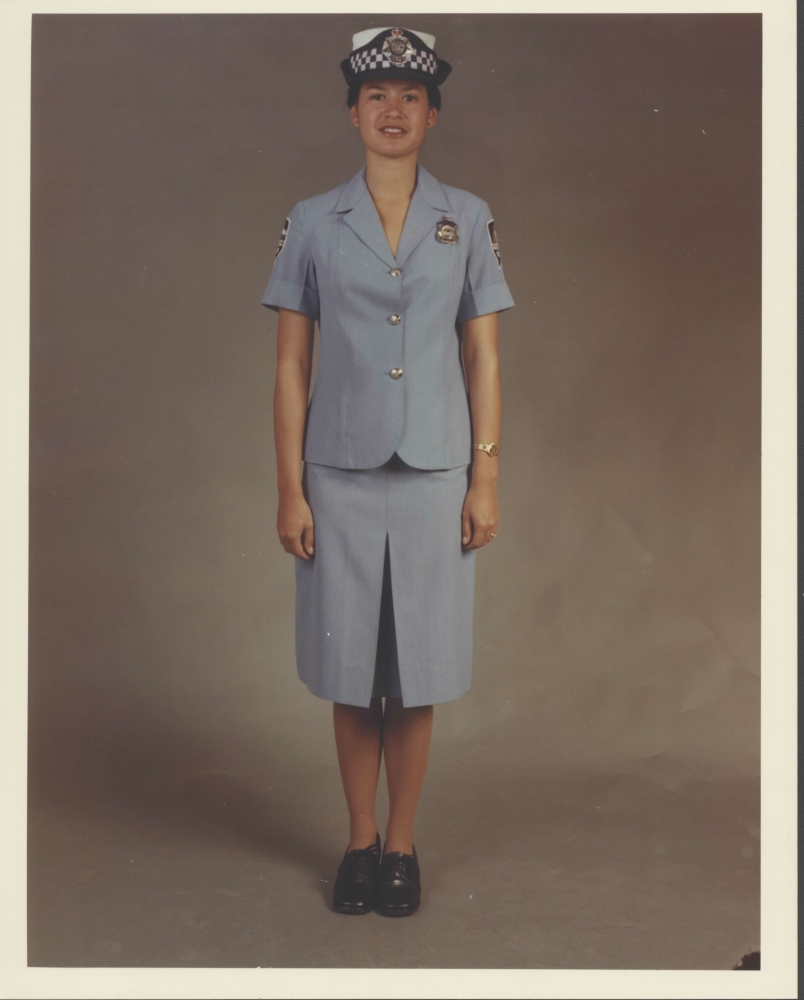
Moving to a more serviceable uniform for women
New uniforms were designed and introduced for practicality and service. They allowed policewomen greater mobility and the materials used were the same as the men’s uniforms. The new uniform comprised a blue shirt and black culottes topped by a black hat with a chequered band.
Belts were back, and the next item on the uniform evolution agenda was slacks instead of skirts. ACT Policing’s Uniform Committee rejected policewomen wearing slacks for many years. The committee argued that women’s duties did not justify this uniform entitlement. After much discussion, slacks were eventually introduced.
Soon after the slacks, the dark blue women’s leather jacket was also introduced. It was a big hit in the late 90s and early 2000s. The jacket had 2 breast pockets each with 2 press studs and a side pocket on each side. It had long, thin, internal pockets on each side and removable inner lining. An adjustable section on waist helped alter wind resistance.
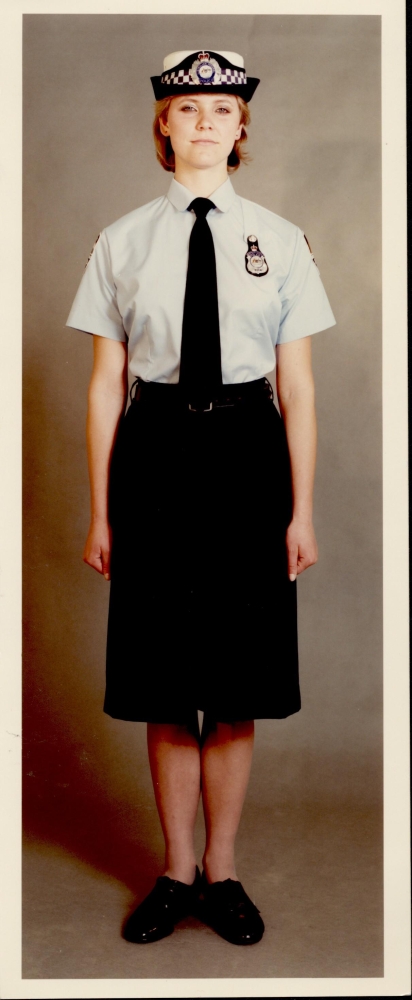
A practical, tactical and comfortable uniform for every role
We have come a long way since plain clothes and pearls. Since, leather handbags to hold all, and even leather jackets. From riot gear to riding gear – the AFP policewomen’s uniform is now fit for purpose. Policewomen have the option to wear a skirt, or trousers. They are also provided with the specific clothing, accoutrements and equipment to perform their roles.
The policewomen’s uniform is practical, tactical and comfortable. Worn with pride, respect and remembrance.


